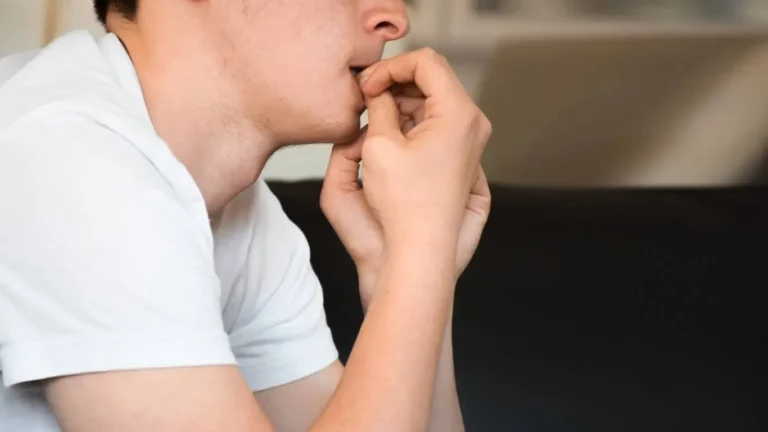Why Selective Mutism in Children Can Quietly Hurt Their Growth
If you’ve ever watched your child freeze up completely when someone speaks to them—and I mean not just shy or hesitant, but absolutely silent—you might know exactly what I’m talking about. It’s not rudeness. It’s not just shyness. It’s something deeper, more paralyzing. My nephew went through this, and at first, we just thought he was being “painfully shy.” It took us a while to learn there’s actually a name for this: selective mutism. And trust me, once you understand it, it makes so much more sense—and opens up paths to help.
What Is Selective Mutism in Children?

Selective mutism is a childhood anxiety disorder where a child who is normally talkative at home is consistently unable to speak in certain social situations—like school or around unfamiliar people. And no, they’re not doing it on purpose.
This isn’t just about a kid being shy or “growing out of it.” Children with selective mutism experience a very real, almost freezing form of anxiety that makes speaking feel impossible in certain settings. It often starts before age five, and if left untreated, it can linger well into adolescence—and even adulthood.
Key Characteristics to Watch Out For
- Speaks normally at home but is silent in public settings like school
- Appears “frozen” or expressionless in social environments
- May communicate through gestures or nodding instead of speaking
- Seems extremely anxious or uncomfortable in group settings
- Silence persists for at least one month (not just during the first weeks of school)
Why It’s Often Misunderstood

I can’t tell you how many times I’ve heard “They’ll grow out of it.” That was our first instinct too. But selective mutism isn’t just a phase—it’s a serious anxiety-based condition. And when it’s dismissed or ignored, it can seriously affect a child’s academic and social development.
Some parents and even teachers might think the child is being defiant or manipulative. The reality? They’re terrified. Imagine having the words in your head but being mentally paralyzed every time you try to speak. That’s what it feels like for these kids.
Common Myths Debunked
- Myth: “They’re just shy.”
Truth: Shyness fades. Selective mutism stays—and grows if not addressed. - Myth: “They’re being stubborn.”
Truth: These kids desperately want to speak. Anxiety stops them. - Myth: “They’re not trying hard enough.”
Truth: It’s not about effort—it’s about fear. Forcing them can backfire.
What Causes Selective Mutism?

It’s often linked to a broader underlying anxiety disorder, usually social anxiety. Genetics play a role too—children with a family history of anxiety are more at risk. I’ve seen that in my own family. My nephew’s mom (my sister) has always struggled with social anxiety, so once we dug deeper, things started to click.
Some other contributing factors include:
- Speech or language processing issues
- Sensory processing sensitivities
- Perfectionism—fear of saying the “wrong” thing
- Early traumatic social experiences
Triggers and Environments That Worsen It
Environments that demand verbal participation (like a classroom or group activity) are the most common triggers. Loud places, unfamiliar adults, or pressure to “perform” can intensify the silence. And ironically, praising them too much when they do speak can make them withdraw again—because it brings too much attention to their speech.
How It’s Diagnosed (and Why It’s Often Missed)

Unlike more visible disorders, selective mutism can fly under the radar. Many pediatricians are still unfamiliar with it. Diagnosis usually comes from a child psychologist or psychiatrist who uses behavioral assessments and interviews with parents and teachers.
Tools like the Beck Anxiety Inventory or the GAD-7 questionnaire can help identify the anxiety layer behind the silence.
And if you’re still unsure whether what you’re seeing is just extreme shyness or something more, a self-assessment anxiety quiz can be a solid place to start—not a diagnosis, but a good nudge to seek help.
Treatment That Works—What Helped My Family

When my nephew finally started seeing a child therapist, it wasn’t about “fixing the silence.” It was about building comfort and safety around speech. He started with play therapy—no pressure to talk, just trust-building. Slowly, the therapist added “brave talking” games, where he’d practice whispering in safe spaces, then speaking in a low voice, then eventually in public settings.
The gold standard treatment is Cognitive Behavioral Therapy (CBT), often using a technique called “stimulus fading.” Basically, it’s gradual exposure—start in a comfortable place with a trusted adult, then slowly add in a new person, then shift the location. It’s slow, but effective. The key? Never force it.
Sometimes SSRIs are prescribed if anxiety is severe, but it’s not a one-size-fits-all. Medication should never be the first line—therapy should.
If you’re serious about tackling anxiety in all its forms, check out this deep dive on psychotherapy for anxiety disorders—a really useful breakdown. And for a wider understanding of how anxiety disrupts everyday life (not just for kids), here’s an insightful read: Why Anxiety Disorders Can Secretly Control Your Daily Life.
More information and guidelines are available through reputable mental health platforms like adaa.org, childmind.org, and nimh.nih.gov.
Helping at Home: What Parents Can Do Daily

One of the biggest shifts for us as a family came when we stopped trying to “correct” the silence and started supporting it. If you’re a parent of a child with selective mutism, you might feel helpless. I definitely did. But small, consistent steps at home can make a massive difference.
Build Comfort Without Pressure
- Let your child know you understand—it’s not about “getting them to talk.”
- Use non-verbal communication at first—drawings, gestures, even silly notes.
- Create quiet, low-pressure speaking zones at home where there’s no expectation to perform.
One thing we did that worked wonders: voice recording games. No audience, just recording a message to a pet or favorite toy. It took weeks, but those tiny victories built up confidence like nothing else.
Use Tools Designed for Home Use
Simple tools like progressive muscle relaxation and breathing exercises are super helpful for children before social situations. These techniques help rewire their association with triggering environments from panic to calm. We even made a “brave breathing” chart at home and celebrated every time he used it.
What Teachers Need to Know

Teachers are often the first to notice something’s up—but not all are trained to recognize selective mutism. A well-meaning teacher might try to push for verbal participation, thinking it’s a motivational tactic. It’s not. That can shut a child down even further.
If you’re an educator, here’s how you can support a child with selective mutism:
- Allow alternate forms of communication—nods, hand signals, written notes
- Build rapport through play or one-on-one quiet time, not by urging speech
- Avoid singling the child out for praise related to talking—it can backfire
- Collaborate with parents and therapists on gradual exposure plans
Classroom support is most effective when it’s subtle, empathetic, and consistent. You can find structured exposure plans outlined in resources from childmind.org and in therapist-directed interventions like exposure therapy.
When to Seek Professional Help (And What That Looks Like)

Every child is different, but if the silence persists for more than a month in public or educational settings—and especially if it’s affecting learning, friendships, or self-esteem—it’s time to bring in a specialist.
Look for professionals experienced in anxiety disorders and child therapy. Ideally, you want someone who uses play-based CBT approaches or is familiar with Selective Mutism-specific protocols like:
- Stimulus fading
- Shaping (rewarding brave talking behaviors)
- Desensitization to feared social environments
Speech therapists may also be helpful, especially if speech or language issues are co-occurring. But the anchor of the treatment should be psychotherapy tailored for anxiety.
Support Beyond the Clinic

It’s easy to feel isolated. I know I did. But finding support groups or online communities made me realize how many other families are going through the exact same thing. Hearing other parents share their “breakthrough” moments, even tiny ones, gave me hope on the rough days.
You can also find resources on alternative techniques that some parents explore—like journaling together with your child or even incorporating mindfulness through yoga practices. These don’t replace therapy, but they complement it beautifully, especially at home.
There’s also a growing interest in nutrition and anxiety, especially in young children. While the science is still evolving, I did notice a slight shift in my nephew’s overall calmness when we started incorporating more magnesium-rich foods and cutting back on sugar. It wasn’t a magic fix—but every little bit counts.
Don’t Wait—Start the Conversation Now

I’ll be honest—early on, I felt stuck. Between fear of labeling my nephew and thinking it would just pass, we almost waited too long. If I could go back, I would’ve taken action sooner. Getting informed is step one. Taking action—even small ones—is step two.
Selective mutism is hard. It’s layered, quiet, and often misunderstood. But it’s treatable. And your child doesn’t have to struggle in silence.
Explore this essential breakdown on lifestyle and self-help strategies for anxiety disorders—it’s full of practical, family-focused tools. And if you’re new to how anxiety takes root and silently grows over time, this foundational read is a must: Why Anxiety Disorders Can Secretly Control Your Daily Life.
For more tools and evidence-backed support, platforms like adaa.org and childmind.org are invaluable.

Camellia Wulansari is a dedicated Medical Assistant at a local clinic and a passionate health writer at Healthusias.com. With years of hands-on experience in patient care and a deep interest in preventive medicine, she bridges the gap between clinical knowledge and accessible health information. Camellia specializes in writing about digestive health, chronic conditions like GERD and hypertension, respiratory issues, and autoimmune diseases, aiming to empower readers with practical, easy-to-understand insights. When she’s not assisting patients or writing, you’ll find her enjoying quiet mornings with coffee and a medical journal in hand—or jamming to her favorite metal band, Lamb of God.






